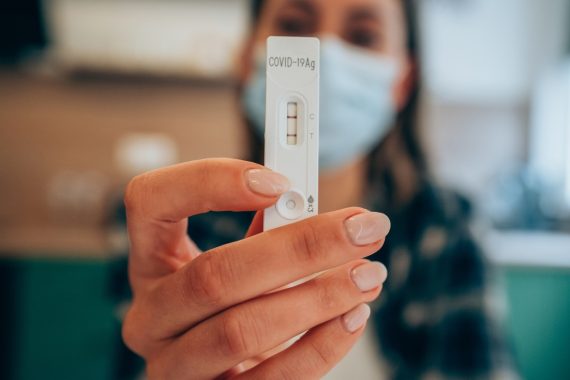Autumn Covid wave arrives with one-in-32 infected

The UK is now seeing an autumn wave of Covid cases, data from UKHSA and the ZOE symptom study app suggests.
On average around one in 32 people in the UK currently have symptomatic Covid, the figures show, with rates are rising in all age groups and most notably the over-75s.
The 176,090 new daily symptomatic cases being seen is a 72% rise from figures a month ago, the ZOE Health Study reported.
And the hospital admission rate for week 38 was 7.62 per 100,000 population, an increase from 4.96 in the previous week, the latest report from UKHSA said.
Hospital admission rates for Covid-19 are highest in the North East, with a rate of 10.82 per 100,000 population, latest figures show.
Dr Mary Ramsay, director of public health programmes at UKHSA, said: ‘It is clear now that we are seeing an increase which could signal the start of the anticipated winter wave of Covid-19 – so the time to boost your protection with a vaccine if you’re eligible is now. Cases have started to climb and hospitalisations are increasing in the oldest age groups.’
The ZOE data also shows common colds are also increasing rapidly and are around five times more common than Covid-19.
It follows warnings from UK public health officials that this year’s flu season is likely to be severe and strike early.
UKHSA also said there is the potential for a ‘twindemic’ with Covid and flu both expected to circulate widely.
ONS data published last week had also signalled that Covid rates had started to increase once more in England and Wales.
The 33 million people eligible for a flu jab and 26 million offered a Covid booster have been urged to come forward for their vaccine.
More than 2 million Covid vaccines were given in the first fortnight of the campaign which opened to the most vulnerable first, rising to 3 million this week.
Professor Tim Spector, scientific co-founder of ZOE at King’s College London, said the most common symptom of Covid-19 was still sore throat which affected two-thirds of positive cases, with fever and loss of smell now much rarer (less than one in six).
‘It’s clear from ZOE Health Study data that we’re now seeing an autumn wave of Covid-19, combined with increases in hospital admissions.
‘We are already at rates last seen in the June wave. With rates on the rise, especially in the vulnerable elderly age groups, the impact on hospitalisations could be higher.’
But he added the youngest age group were showing possible early signs of case numbers slowing, which if it continues next week may suggest the wave might not be as bad as previously predicted.
‘But we are likely to be hit with a combination of viruses. With the increase in colds and rhinovirus, as well as Covid-19, and the likelihood of a major seasonal flu epidemic, it’s especially important to keep vulnerable people properly protected.’
Meanwhile, a review of the NHS 111 response at the early stages of the Covid pandemic has identified an overreliance on phone services and a lack of support for clinicians.
Clinicians working for the Covid Clinical Assessment Service (CCAS), many of whom were GPs several years into retirement, reported receiving IT training but no clinical training, nor updates regarding the developing virus.
Visit Pulse Reference for details on 140 symptoms, including easily searchable symptoms and categories, offering you a free platform to check symptoms and receive potential diagnoses during consultations.
Related Articles
READERS' COMMENTS [1]
Please note, only GPs are permitted to add comments to articles










You might need to explain to the public again, what covid is. And what an antibiotic is…you know, the same old boring blah.
Brick walls. Hope you’ve got coffee machines and blankets for the ambulance staff waiting in the cold. They’ll deserve that at least.